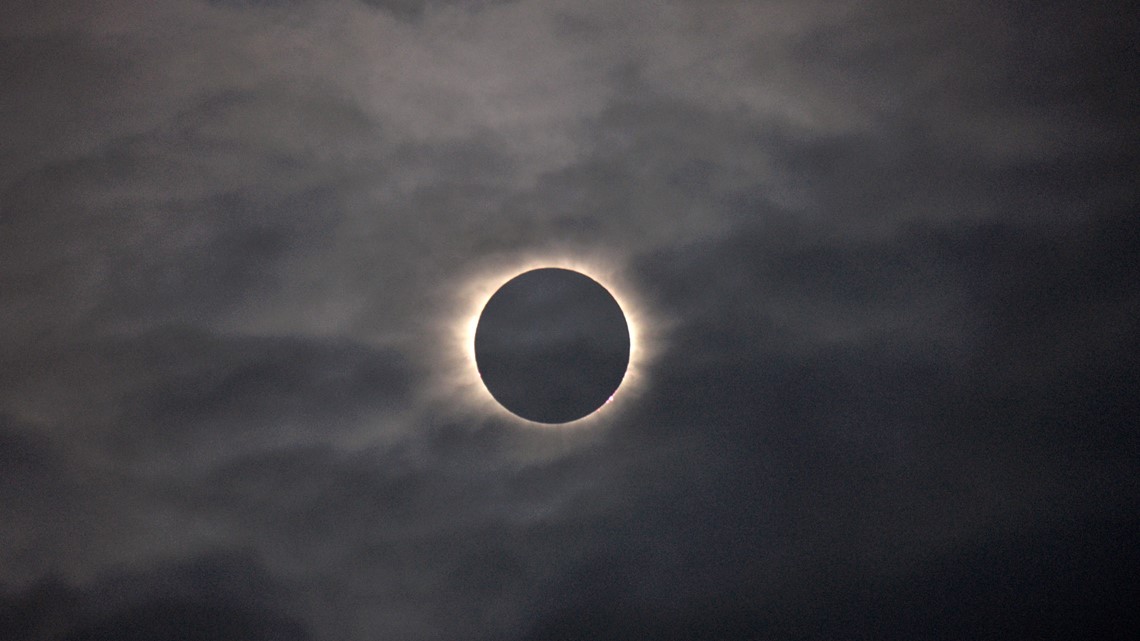WASHINGTON — It was the last chance for what many headlines dubbed a "once-in-a-lifetime" sight.
Thousands of people hit the beaches in Charleston, South Carolina on a partly cloudy August day, donning plastic-and-cardboard glasses and squinting up into the cloudy sky, hoping for a glimpse of the U.S.'s first total solar eclipse in decades. Others packed rooftops or lined the streets.
Reports from the time say there was no statewide estimate of visitors to South Carolina for the 2017 eclipse, which blotted out the sun for a narrow swath of land from Salem, Oregon to Charleston. While a Charleston official told The Post and Courier that the city and two beachfront parks saw less traffic and crowding than on the Fourth of July, the mayor of nearby McClellanville described larger-than-expected crowds that completely lined the streets.
"There was no way for us to predict the impact that this was going to have," said Explore Charleston VP Doug Warner. "Because we're on the ocean, we're the last point of when that eclipse left the United States ... so there really was an awful lot of focus on us."
Warner said Explore Charleston started planning for the eclipse about a year before it happened. On top of a marketing campaign and coordination with local hospitality businesses, the organization ordered 100,000 eclipse glasses to distribute at visitors' centers, hotels and restaurants.
"We did not have enough," Warner said. The specialized sunglasses, which are the only safe way to look directly at the sun during an eclipse, were in short supply for many last-minute searchers.
The U.S. will see its next total solar eclipse on April 8, 2024 — less than 7 years from what headlines in 2017 proclaimed "The Great American Eclipse." It'll sweep from Texas to Maine, bringing with it the last chance to see a solar eclipse from the U.S. for decades.
"If you're within an easy few hours of getting into the line of totality, you need to take the opportunity to do it," said KSDK meteorologist Scott Connell. "I mean, it is something you will never ever forget."
Connell covered the 2017 eclipse from St. Louis, which is near the spot where the two eclipses' paths cross — giving residents the rare chance to see two total solar eclipses from home.
"Most people aren't going to get to see (a total solar eclipse) in the world. You're very lucky if you get to see something like this," he said.


According to a recent map from NASA, the entire contiguous U.S. will have the chance to see a partial eclipse during the 2024 event. The effect will be less dramatic the further you are from the eclipse's path. Even a spot with just a sliver of sun visible will be a different experience from true totality, Connell said.
One factor that's hard to plan for: Weather. While many cities and tourists will make their plans far in advance, weather forecasts won't have much certainty until one week out — a situation eclipse-watchers in Charleston may remember well.
"There was a pretty dramatic storm moving in, coming from the west to the east," Warner said. "The clouds were really building as it got dark, including a lot of electricity."
But, he said, it was "spectacular."

